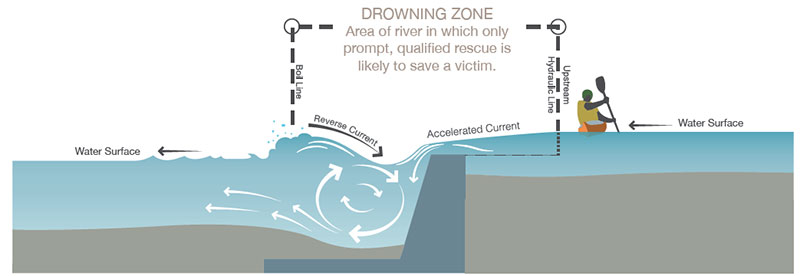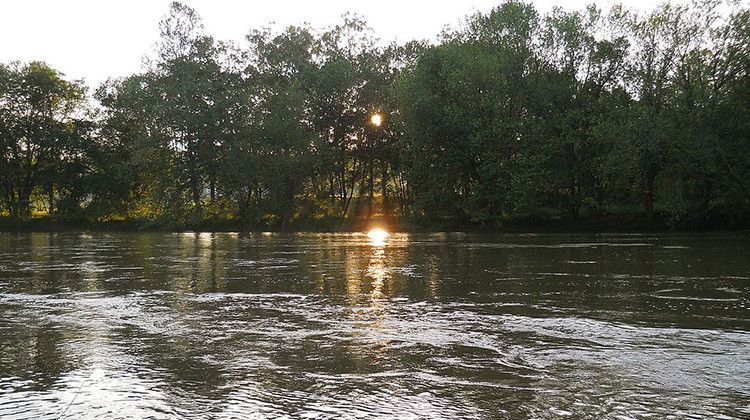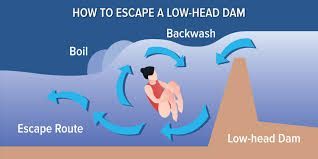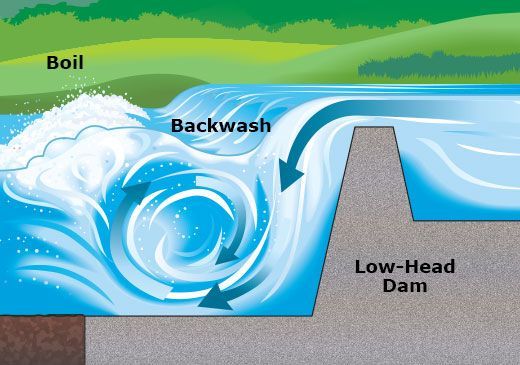
The following information has been gathered through several resources. Some through a simple word search of Low Head Dams. Other information has come from studies that were paid for to help determine the impact removal of the dam would have for those questioning or making statements that were later disproved by this research and other documentation, such as legal filings against removing the dam and then later against River Heritage Conservancy itself.
Bottom line, all information presented is from a variety of publicly available resources and for one purpose- that you can review and make your own conclusions as to the removal of the dam.
The following information was gathered through searching Low Head Dams on the internet.

Indy to remove low-head dam on White River where two kayakers drowned in April
Karl SchneiderIndianapolis StarNew Paragraph
Published May 6th 2024
To learn more go to:

National Weather Service
According to the American Society of Civil Engineers (ASCE), "A low head dam is a manufactured structure, built in a river or stream channel, extending fully across the banks. A low head dam is designed and built such that water flows continuously over the crest from bank to bank. If water levels rise downstream, a submerged hydraulic jump can form which produces an upstream directed current that traps any recreationist who might go over the dam."
To know more, click the button below.

JUNE 26, 2024
To make the White River safer for people and fish, Indianapolis will destroy a dangerous low-head dam.
WFYI Indianapolis report.

Why are low head dams dangererous?
Low-head dams can be deceivingly dangerous. At times the water around them appears tranquil and inviting; however, moderate to high flows over such dams create strong turbulence and recirculating currents that can push victims underwater, and then pull them back to the face of the dam in a repeating cycle.
To learn more, click the button below.

Low Head Dams
The low-head dam is the most dangerous type of dam and has been named the “drowning machine.” They may not be easily spotted because the top of a low-head dam can be several feet below the water’s surface. Because of their small size and drop, low-head dams do not appear to be dangerous. However, water going over a low-head dam creates a strong recirculating current or backroller (sometimes referred to as the “boil”) at the base of the dam. Even on small rivers, the force of the backroller can trap your boat against the face of the dam and pull you under the water—even while wearing your personal flotation device (PFD). Be aware that on large rivers or during high water, the backroller or boil may be located more than 100 feet downstream of the dam.
To learn more- click the button below.
Follow us
This site was developed and paid for through a private donation.